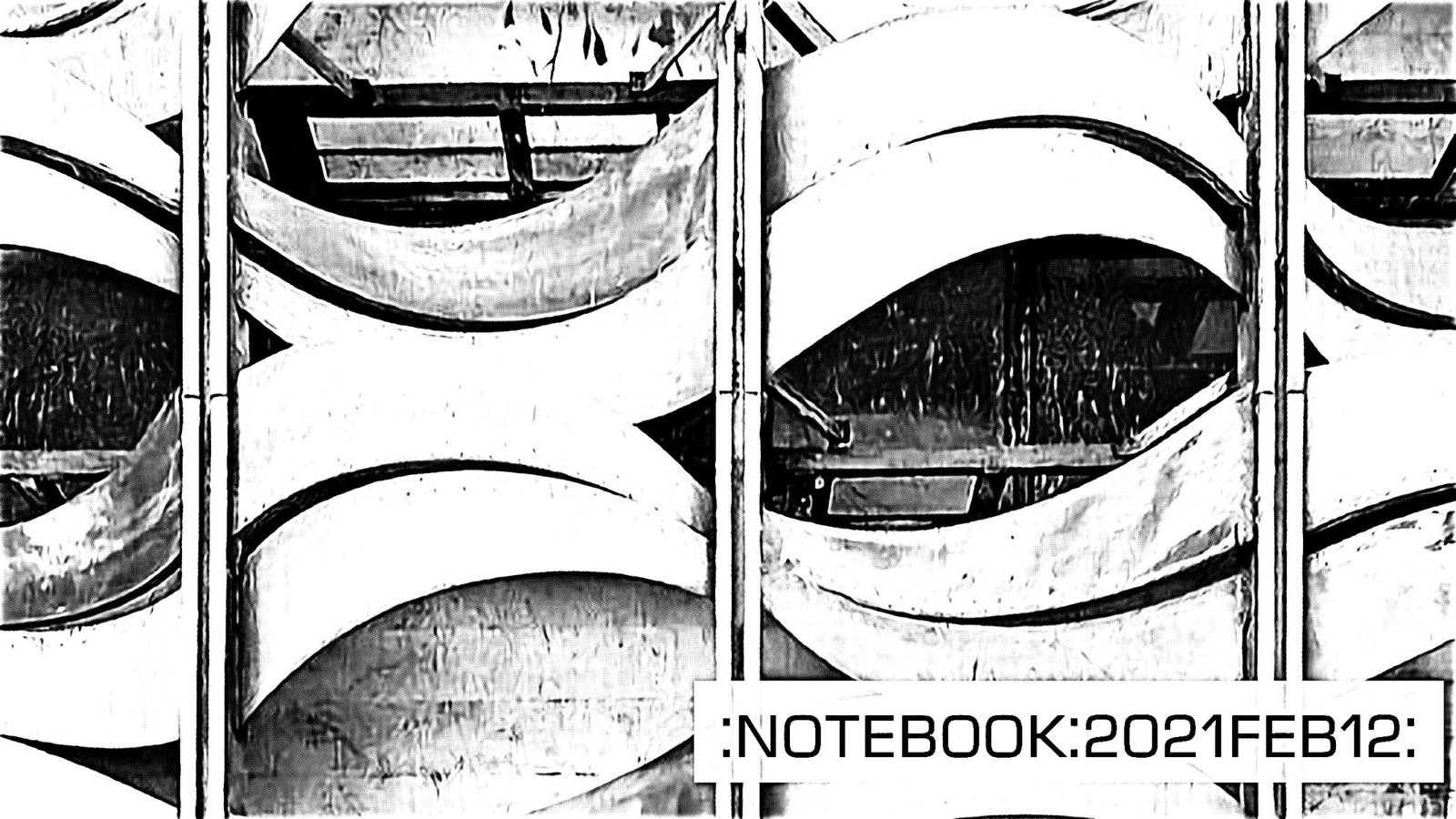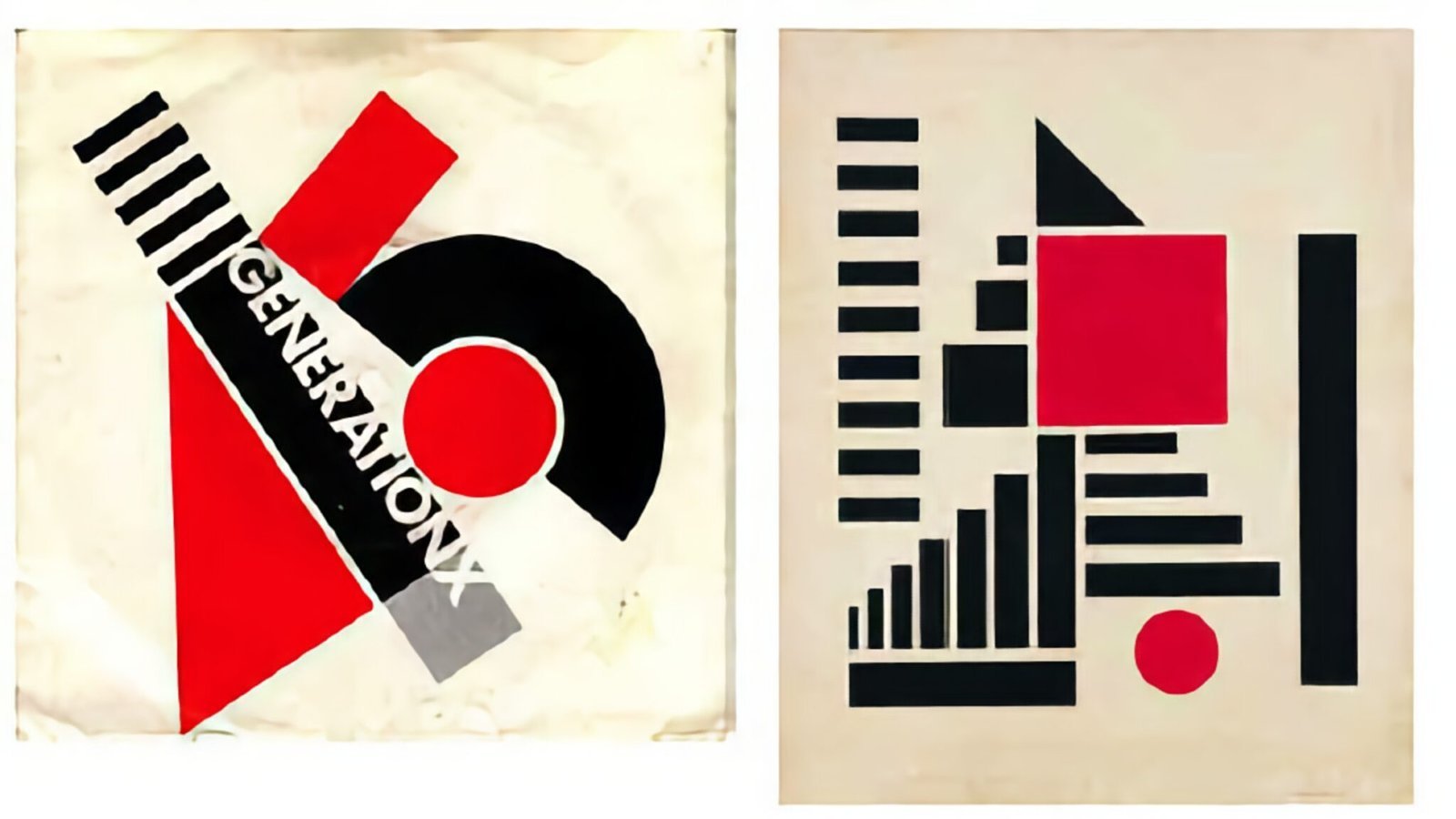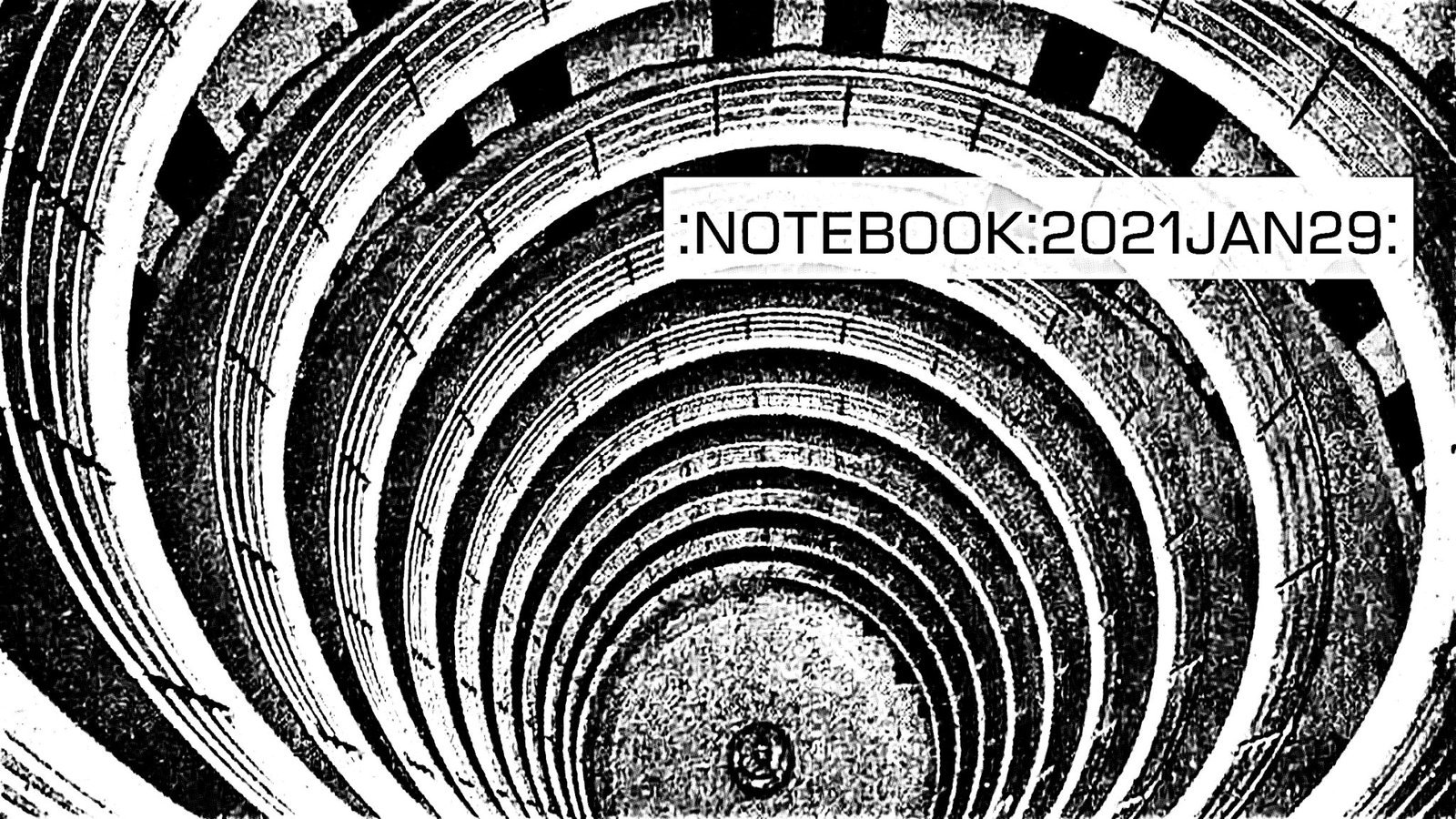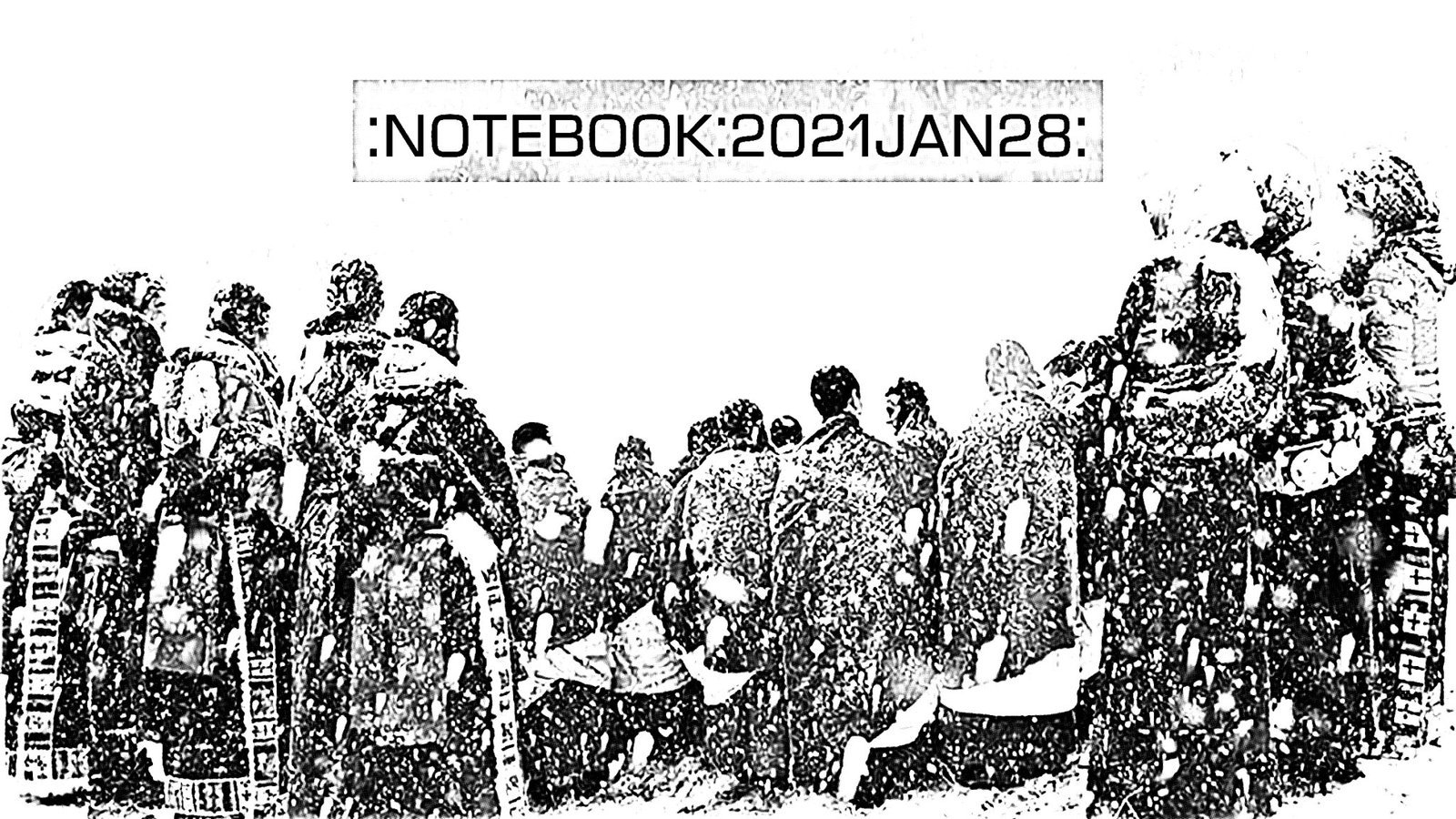🔗 → Electronic Music Experimentation In The Films Of Alfred Hitchcock
… and here’s some more on the Trautonium, a trippy early electronic instrument used extensively for sound design in The Birds.
the scene celebrates itself
by M Donaldson // Leave a Comment
🔗 → Electronic Music Experimentation In The Films Of Alfred Hitchcock
… and here’s some more on the Trautonium, a trippy early electronic instrument used extensively for sound design in The Birds.
by M Donaldson // Leave a Comment
What’s all this then? I took a few months off from micro-blogging while I contemplated what I wanted to get out of it — and to develop a better system. As for the first bit, I want a rolling log of what I’m doing and things I find interesting which I can easily search and reference. These micro-posts might become topics that I expand upon in the blog proper and my email newsletter. As for the system, it’s important that this log exists on a platform that’s semi-permanent and that I own. I was in the process of creating a separate WordPress install on the blog’s sub-domain (which would’ve added a layer of resistance to my process) when I discovered this post. Violà! After some simple PHP tweaks, I now have a ‘status’ feed that’s separate from the main blog feed. This status feed auto-magically posts on micro.blog. I set it up yesterday — relatively painless with only a couple of easily squashed bugs — and it seems like it’s working fine. That means I’m back to micro-blogging. I look forward to using this as a tool to capture what’s happening and inspire more long-form blogging action. It’ll also be nice to re-enter the micro-blogging community and contribute to the exchange of ideas.
BTW – these status updates are on a separate RSS feed than the main blog. So, if you want to follow this in your handy RSS reader then you’ll want to follow this feed.

by M Donaldson // Leave a Comment
In this fantastic 2-hour radio show, writer Jon Savage spotlights the influential music that “cut the knees off punk.” Meaning: the synthesizer and electronic music hybrids emerging in 1976, opening the door to the oncoming post-punk explosion. Listen.
by M Donaldson // Leave a Comment
by M Donaldson // Leave a Comment
… as early as 1970, a native spirit of sonic experimentation in broadcasting, complete with mini-Moog, was flourishing in the US just as it was in Britain, perhaps just a bit further below the mainstream radar.
by M Donaldson // 1 Comment

Can’t Get You Out Of My Head → I’m looking forward to seeing Can’t Get You Out Of My Head, the latest documentary epic from Adam Curtis. He’s expanding on his favorite topic: how those in power unscrupulously maintain their positions in a world that’s increasingly outside of their control. The ideas in Curtis’s docs are heavy and frightening, but his style is endearing. That style includes a dizzying montage of images usually sourced from discarded video newsfeeds, big text in an Arial font, his hypnotic “as I slowly count to ten …”-like narration, and a slew of impeccable music selections.
Most likely, that music is why Can’t Get You Out Of My Head is presently geo-locked and only accessible to UK viewers via BBC iPlayer. Without getting too deep in the music rights weeds, the United Kingdom has a unique set-up where much of the music registered through its collective management organizations (CMOs) is pre-cleared for synchronization on national television. In other words, if a song is available through the UK CMOs, then a BBC television program can use the music without negotiating a license — the fee is already set. This means songs can get placed in British television programs quickly and without fuss. And if you believe what Adam Curtis says in this interview, he was still choosing final songs as recently as two weeks ago. But the downside of this type of license is it’s only valid for the UK — these rights don’t extend to other countries, and that’s why you can’t see this (and most other BBC shows) on iPlayer if you’re not in Ol’ Blighty.1If that’s the case, your new friend’s initials might be VPN.
I’m sure the producers and music supervisors are presently working on the appropriate licenses for international audiences. Clearing music for global viewing isn’t quick and easy and could take months. But my money is on Can’t Get You Out Of My Head appearing on Amazon Prime eventually, as that’s where a number of Curtis’s previous documentaries are sitting. Or, you could be a rapscallion and keep an eye on YouTube.
In the meantime, check out this New Yorker profile on Adam Curtis. Sections of the piece describe his process, which is perplexing and fascinating. Curtis regularly watches hours of random footage on fast forward until:
When something catches Curtis’s eye, he slows the film down and makes a note. “VVVVVVVVG shots—beam plays over sleeping children,” Curtis wrote, of a BBC documentary about psychiatric therapies from 1970, in a viewing note that he shared with me. The number of “V” s indicates how good Curtis thinks the footage is. (I counted twenty-three “V” s before one “G.”) He then organizes his impressions into broad categories: whether something helps tell the story, or illustrates an idea, or reflects broader themes about the history of the world. “It’s messy,” Curtis said. “But I have a very good memory.”
——————
Cop Rock → Speaking of music rights and takedowns and whatnot, check out this bizarre story about a cop in Beverly Hills attempting to use Instagram’s copyright protections to stop a livestreamed recording. As an activist was filming an interaction, the officer inexplicably pulls out his phone and starts loudly playing Sublime’s “Santeria.”
Based on what’s visible in the video, [the officer] seems to be banking on Instagram’s copyright algorithm detecting the music, and either ending the live stream outright or muting it. Or, even if the algorithm does not detect the song immediately, someone — for example, a disgruntled police officer—could simply wait until a user posts an archive of the live video on their page, then file a complaint with Instagram that it contains copyrighted material.
Though Instagram has strict music policies, the rules have loosened. Most music labels and publishers have deals in place with Facebook/Instagram to allow music. And clips with this music is generally okay when the “recorded audio [is not] the primary purpose of the video” (quoting Instagram).
But some songs still pose potential problems and takedowns, such as those recorded by The Beatles. And that’s not lost on the Beverly Hills police force. In a separate incident, the same activist questioned an officer who pulled out his phone and treated live viewers to “In My Life.”
So far, the videos are still online despite the policemen’s efforts. But these strange tactics are another reminder that we’ve already fallen into some bizarro-tech Black Mirror timeline.
——————
Shea Betts – Enna → NYC musician/librarian Shea Betts visits us again with a dose of aural contemplation on his tranquil new album, Enna. I recently reviewed Sea / Sky, his debut release, and its overdriven, ‘natural-wonder’ ambient music style. While that album conveyed a windy skyline meeting rough seas, Enna captures an extended episode of pleasance and stillness. And with the cover art foliage and titles like “First Light,” “Bloom,” and “Sunday,” one gets the feeling that spring is in the air.
The album’s method resembles languid chords played on organ or harmonium, realized through warm, synthesized textures that sit somewhere between the two. Shifting movements in the mid-range are often accented with sparkling overtones (most prominently on “First Light” and “August“), barely hinting at melody but still feeling familiar and song-like.
These days I’m drawn to music that I best describe as “reassuring,” something that I can put on as I sit back and clear the attic. Enna fits the bill. And the songs are relatively short — we usually expect a single track in this drone-ish style to take up a side of an LP — but the spaces left in-between songs suggest a moment to breathe and reflect. I’m not sure if this was Betts’ intention and that he meant Enna as a sort of sonic balm, but its tones indeed do wonders for a restless psyche.
by M Donaldson // Leave a Comment

Marc Weidenbaum posted his answers to a ‘concert questionnaire’ yesterday on his (highly recommended) Disquiet blog. I assume this questionnaire is one of those things passed around on Facebook, friends tagged, and so on. While reading Marc’s answers, I started coming up with my own. Remembering was pleasant and wistful, with us all missing concerts and chances to find new favorite bands and experiences. I thought I’d share my answers-at-this-moment here in the notebook.
Last Concert → Sadly, I was being a homebody and didn’t go to many concerts just before the pandemic (if only we had all known, right?). I saw some local band or DJ a week before lockdown — it escapes me who it was. All I remember is during the show a friend offered my wife a job that she ended up taking. But the last concert-concert was probably Dale Watson in Brooklyn during Mondo NYC. That show was one big party, raucous out the wazoo, and, in retrospect, a pretty good send-off before a year without concerts.
Worst Concert → Surprisingly, I’d say Massive Attack in 1991 at SOBs in New York, their US debut. There was a ton of hype, and I was very excited, but the performance was meandering, mostly instrumental, and strange, not too different from a bad DJ set. I left midway through. A decade later, I read an interview where Massive Attack was asked what their worst show was, and they named this one. It turned out their vocalist (Shara Nelson?) bailed out a day or two before. They didn’t know what to do and were nervously winging it.
Loudest Concert → My Bloody Valentine in San Francisco on the last reunion tour. I took my earplugs out for a few minutes during the ‘holocaust’ section of “You Made Me Realise” to experience it raw. I’m glad I survived. The venue — an old aircraft hanger — may have had something to do with the volume as I saw them again the next night in Los Angeles. L.A. was still loud but not “this place is gonna explode in flames any minute” loud like it was in S.F.
Seen the Most → Besides the bands I toured with, probably Sonic Youth, who I saw about four times starting with the Daydream Nation Tour. However, they might be tied with Alex Chilton. My favorite Sonic Youth show? When they opened for Neil Young at our local basketball arena. The size of the venue did wonders for the band’s squall.
Most Surprising → There was no opening band listed for that My Bloody Valentine concert in San Francisco. While waiting for the show to begin, a rumor started to go through the crowd that Sonic Boom, formerly of Spacemen 3, would be opening. Exciting, yes, but Sonic Boom’s solo work at the time was mainly droning (but good) ambient type stuff. Then the crew set up Sonic Boom’s gear, which included a full drum kit, bass amp, a second guitar amp … curious. That didn’t look like ambient music. Then Sonic took the stage with a band and immediately launched into Spacemen 3’s “Revolution.” Hey, what?!? And then the band proceeded to play a 45 minute set of nothing but Spacemen 3 songs. Now that’s what I call a surprise. And it seems like it was a one-off as Sonic Boom was nowhere to be found the next night in Los Angeles.
Best Concert → There are many vying for this slot. Zeena Parkins at Timucua White House would also go under the ‘quietest concert’ category if there were one. The Butthole Surfers in Houston in 1988 (with The Flaming Lips), which was definitely the most life-changing concert. I wrote about that here. Pylon and Public Enemy, the couple of times I saw them both (separately!) in 1990. And, as an unexpected callback to the top of this list, Massive Attack in the mid-2010s. They were so good I was speechless for about an hour after the show.
Next Concert → Who knows. I had tickets to see Kraftwerk play so close to my house I could have taken a long walk to the venue. The pandemic said no. And Terry Riley was set to play Timucua a few months ago. Fingers crossed that these get rescheduled.
Wish I Could Have Seen → I had a chance to get in a car with some friends and go see Hüsker Dü in New Orleans. One of those friends had a college radio show that night and needed someone to sub. As much as I loved Hüsker Dü at the time, I loved being on the radio more, so I stayed in Ruston, LA, and filled in on his show. My thinking was that I’d catch Hüsker Dü the next time around. They broke up a few months later.
by M Donaldson // Leave a Comment

The Web is Too Damn Complicated → Robin Rendle says, “The web doesn’t have to be this ugly and embarrassing thing … the web can be made beautiful.” He’s made a beautiful webpage to prove this case. Rendle has illustrated his scrollable essay with vintage woodcuts and metal engravings that are surprisingly effective in amplifying his points. And those points are about how the recent ubiquity of email newsletters is a missed opportunity for a blog renaissance.
Rendle is really asking, “how do we make the web for everyone?” He sees the rise of newsletters as an encouraging sign that people are moving away from social media’s grasp. But why not embrace blogs, which are capable of much more creativity than allowed in email? Because, ultimately, the open web is not as convenient. Website-building is not intuitive, nor is website-following (“RSS is for nerds.”). The creators of Substack know this and made a publishing tool that’s easy to use and receive.
“If we could subscribe to websites easily,” says Rendle, “then the web itself might not feel quite so forgettable.” He suggests that browsers should include built-in RSS reading. In a way, I guess this would be like a global version of Facebook’s newsfeed. That feed is essentially an RSS reader, but one can only subscribe to feeds within Facebook’s prison camp.
I do like newsletters. On second thought, I actually like that more people are writing and sending out personal essays. The email newsletter is merely the delivery method. Thanks to Feedbin, I read my newsletters in an RSS reader, living side-by-side with the blogs I enjoy.
I have an email newsletter but, if I had to choose, this blog is my preference. It feels more open, free, and permanent (as permanent as something on the web can be). I do fear that newsletters may prove a fad — both Facebook and Twitter are jumping on the newsletter bandwagon, which hints that ‘peak newsletter’ isn’t too far off. Blogs remain that scruffy outlier, unpeggable and persistent, slippery between fingers of profit-hungry CEOs. Email’s okay, but blogs keep the web weird.
——————

New Wave Eye Candy → That’s a tag on Simon Reynolds’ Hardly Baked blog, and there are three installments in the series (so far). These posts contain a long scroll of vintage graphics from album covers, adverts, and posters that exemplify the look and attitude of the post-punk new wave. It’s also a remarkable glimpse of cutting edge graphic design just before the days of Photoshop et al.
——————
Emily A. Sprague – Hill, Flower, Fog → “Mirror” is the unassuming third song on Emily A Sprague’s latest, Hill, Flower, Fog. As gentle as a shower of cotton puffs, the song lightly bubbles and pings in sensuous repetition for over nine minutes. The changes are subtle — a lonesome synth swell lingers in the background, pining for recognition, and stereo echoes increase patiently. “Mirror” is the best kind of unobtrusive, and it’s almost shocking when it ends. It feels like a sound that should last forever.
It’s tempting to say the same about all of Sprague’s latest album for RVNG Intl. — its warm reassurance is a welcome companion. It feels real, and, over six sonic tapestries, Sprague turns a Eurorack’s cold toughness inside out and brushes its circuitry with earth, dew, and sap. Like mysteries of the natural world, Sprague’s electronics feel emergent.
Hill, Flower, Fog is a pandemic album, recorded last March as the world started to realize the trials to come. But these songs magically (and sonically) trade impending sense of loss and uncertainty for sonic intimacy and optimism. One could note that Sprague’s cyclic melodies and looping treatments reflect the imposed routines of lockdown. However, the music is encouraging, inferring these daily patterns as something cherishable, an opportunity for reflection and moving inward. It seems to say, “one day at a time.”
by M Donaldson // Leave a Comment

User-Centric Dreaming → The user-centric streaming royalty model — explained and critiqued here — was the focus of a new study by the National Music Centre in France. Using data from Deezer (who are publicly open to exploring this model) and Spotify (who aren’t but might be shifting), the study determined a small advantage for niche artists, offset by the amount of major label back-catalog material that makes up the majority of streams. Here’s Stuart Dredge in Musically:
There is plenty more to parse from this new study, such as the likely increases for genres like classical music, jazz, metal and blues (and corresponding drops for streaming’s biggest genres: rap and hip-hop). Meanwhile, catalogue music is a beneficiary, which – again, as indicated in previous studies – is one reason why user-centric might not be the redistribution of revenues from major labels to independents that might have been expected.
The user-centric model dispenses of the system of pooled royalties that go out to artists streamed on platforms like Spotify. Instead, a listener’s subscription money only goes to the artists that a listener streams. So, if you listen to nothing but Merzbow1preferably at an ear-splitting volume on Spotify Premium for 30 days, then all of your $9.99 monthly subscription fee goes to Merzbow.
This model may not change the royalty pay-outs much, according to the study. But I’m still into the model for two reasons. First of all, I feel like it would give listeners more emotional investment in the artists they stream. I want to think we’d feel an additional connection with our listening choices, knowing that our streams contain direct support for our favorite artists. Though it’s worth noting, the much-maligned per-stream rate isn’t likely to change.2Though, as a Spotify Premium subscriber, if you only listened to one Merzbow song in a month, then that single stream is worth $9.99. Crazy, eh?
Second, and more significantly, the user-centric model would destroy the shadow industry of stream farms. These are the “pay X amount of dollars for ten thousand streams” folks who load songs into a wall of smartphones, playing a song on each repeatedly to increase stream counts. These plays also theoretically increase the royalties paid to the farmed songs, but it’s at the expense of other artists legitimately streamed on the platform because of royalty pooling. Under a user-centric model, if the stream farm pays $9.99 for a premium account, then the only potential royalty from that account comes out of that $9.99, even if the song is looped a kazillion times. And it won’t affect the royalties of valid artists.
As the Musically article points out, right now, this is all pie-in-the-sky thinking. That’s because for the adoption of the user-centric model, the major labels — many of whom are Spotify shareholders — would have to agree to it. As the model helps niche artists, even slightly, the majors are not going to let this happen.
Anyhoo … want to grok some more pros-and-cons on user-centric streaming? This analysis of how the model changes an artist’s digital marketing strategy, via Bas Grasmayer and his excellent MUSIC X newsletter, is an illuminating read.
——————
Daniel Lanois on WTF with Marc Maron + Rick Rubin on The Moment with Brian Koppelman → Possibly the best thing I did all week was listening to these two podcasts back-to-back. These conversations illustrate how a music producer’s role can overlap with some combination of philosopher, personal coach, and crisis manager. It’s not just about drum sounds and reverb. Lanois talks specifics about the process of wrangling great work from icons (and their giant egos), and Rubin expands on that with the big picture view. I recommend you listen in that order — a masterclass in the mindsets required to inspire others into action, not just applicable to inside a recording studio. Bonus: this interview with Trevor Horn conducted by Prince Charles Alexander (also a producer of renown) has a lot more ‘shop talk’ than the previous two but is still a fascinating listen. Horn is such an engaging interviewee.
——————
Burdy – Satellite → Back in the ’90s, all of us downtempo-headz listened to lots of Fila Brazillia and the other artists inhabiting the Hull, UK, imprint Pork Recordings. One act that stood out was Baby Mammoth, a duo who shared Fila’s knack for melody and sly rhythmic constructions. An amicable gent named Burdy was one-half of Baby Mammoth. We ended up becoming friends thanks to his semi-frequent sojourns to the US, where we often DJ’ed the same club nights. After a couple of solo releases and a stint as an Australian, Burdy took a long break from music-making. Now he reaches out from his new base in chilly Canada, surprising us with a delightful album of fresh music. Satellite is out today on Filtered Deluxe Recordings and features ten tracks that won’t disappoint fans of the Mammoth or their Pork label-mates. The songs feature Burdy’s sense of melody, sense of humor (“Murder Hornets,” anyone?), and his sense of style. Meaning, this is stylish stuff — pleasantly sloping beats, a rush of organic and electronic instrumentation, and vibes for days (or daze) make me wistful for when we used to pack dance floors with 100 BPMs and below. Start with the second track, “Kananaskis,” with its road-movie guitar, watery bounce, and cryptic chants, immediately pulling you in for the long haul.
by M Donaldson // Leave a Comment

Sample-Snitching → One quiet morning in the early 2000s, I arrived at my label’s office and listened to the voice mail no sampling record producer wants to hear. The call was from a lawyer representing the estate of the leader of an obscure ’70s funk band. He knew that I used a 2-bar drum loop from this band on a song from my first album. It didn’t matter that this loop was fairly common, used prolifically in both mainstream hits and underground white labels. It also didn’t matter that I probably grabbed the loop off one of those erroneously named ‘royalty-free’ sample CDs that were common in the ’90s. The lawyer (and, presumably, his client) wanted his cut.
Long story short, the fact the loop appeared in several mainstream hits probably worked in my favor — once the lawyer saw the requested final sales figures for my album, he realized I was small potatoes. I guess I wasn’t worth the effort, and I never heard from him again. But the most disturbing thing was how he found me. He was going through listings of songs that sampled his client on a sample-identifying website.
I’m not sure which site the lawyer used at the time. Today’s most popular one, WhoSampled.com, launched several years after that frightening phone call. But the fear persists among producers. A new article in Pitchfork by Mosi Reeves details how representatives of legacy catalog use WhoSampled to source potential litigation, despite its intended purpose of pointing fans to old records:
It is a useful resource for rap listeners, despite its complicated role in sampling culture. Chris Read, the London-based company’s head of content, said that using the website as a fact-finding tool for potential lawsuits is a violation of its terms of service, and that the practice “stands in opposition to the reason WhoSampled was created, which is to provide a place for music fans to discover the origins of the music they love and celebrate sampling as an artform.” He acknowledged that the site does not distinguish between cleared and uncleared samples in its listings, because information about sample licensing is not always made publicly available. Producers can request takedowns of listings related to their work if there is information that “they would prefer was not published” on the site, he added.
The law is clear, so producers using uncleared samples — myself included — are unambiguously in the wrong. Many in the music industry’s creative roles have called for an overhaul of these laws to recognize sampling as an art form and create avenues for producers working outside the profitable mainstream. Some lawyers, like the one who contacted me and ended up letting the sample slide, would seem to agree. But then there’s the challenge of differentiating those who use samples artfully vs. those who use them to profit off the notoriety of earlier works. Yes, music rights are complicated (a phrase that’s in the running for the motto of this blog).
——————
A preview of Marc Méan’s forthcoming album Basteln → Friend of the blog Marc Méan has recorded a new album, titled Basteln. It’s out next week on Neologist Productions. I’m sure I’ll write more about it upon release as it’s terrific, maybe even better and lovelier than his previous effort, Collage. You can listen to the advance single (or, perhaps, it’s an excerpt as the album consists of two 20-minute tracks), recorded using “Cocoquantus, piano, voice & FX.”
Marc lives in Zürich. The Swiss city has been on my mind as I’m near completing Kim Stanley Robinson’s fantastic near-future climate change novel The Ministry for the Future. Zürich is the setting for much of the novel, and the descriptions of the city are inviting. However, Zürich was already on my radar as the home base of the founders of my favorite art pranksters, the Dadaists. Here’s where Cabaret Voltaire got their name.
——————
Optional Essentials Vol. 1 → My friend Dr Olive — who once took me to the top of Mont St-Michel — recently launched a new label, 3 to the 3rd Music. The latest release is an ambitious two-part compilation cheekily titled Optional Essentials. The hype-text describes this collection as “the home-made home-listening soundtrack to one of the strangest years, written by music makers from 7 countries.” The sound is chill, overall, but audacious. There’s a diversity of instrumentation and mood-scapes, never a dull moment. The sequence is thoughtful, easily pulling the listener into its zone when played from beginning to end. And I have a connection — I contributed the song “Tarkovsky” under my Q-BAM moniker. I recorded this song ages ago, inspired by repeated visits to Moscow and my admiration of the Russian filmmaker named by the title. And I sampled Robbie Hardkiss saying, “Everything is cool.” Also on the compilation: amazing new tunes from my friends (and label-mates) Monta At Odds and Gemini Revolution.